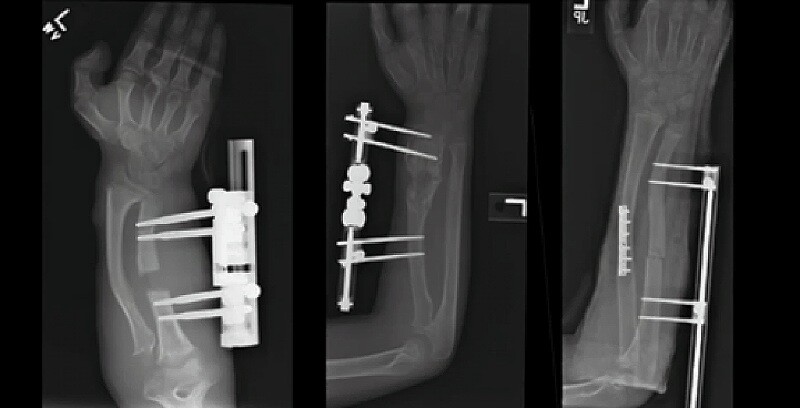Whether it's from injury, infection or malfunctioning genes, millions of children suffer from bone deformities at any given time. To help remedy the situation, doctors often resort to the painful practice of breaking the target bone and then repeatedly moving the ends apart as they attempt to grow together – a procedure known as distraction osteogenesis (DO), that has its share of risks and problems. Now, a team of undergrad students from Rice University (RU) in Texas has come up with a device they hope will make the lengthy process of bone-stretching both easier and safer for the young patients who have to endure it.
At the urging of Dr. Gloria Gogola, an orthopedic surgeon from nearby Shriners Hospital for Children in Houston, the RU team (mechanical engineering students Alvin Chou, Mario Gonzalez, Stephanie Herkes, Raquel Kahn and Elaine Wong) took on the daunting task of creating an automated linear distractor (eventually dubbed LinDi) that is both both self-adjusting and capable of monitoring and preventing potentially damaging stresses in adjacent soft tissues and nerves.
“The process of limb lengthening – essentially creating a localized mini-growth spurt – works well for bones, but is very hard on the soft tissues such as nerves and blood vessels,” Gogola said. “This team has done an outstanding job of designing a creative solution. Their device not only protects the soft tissues, it will ultimately speed up the entire process.”
With current DO rigs, long pins are embedded on both sides of the break in the bone to be lengthened. These are then attached to a bulky threaded frame outside of the appendage with a drive screw that must be regularly adjusted manually several times a day with a hex wrench. This pushes the pins further apart as the bone heals, but before it sets, allowing the gentle elongation of the bone over a period of several months. It's a burdensome task for patient and caregiver alike.

“The problem with the current device is that there’s a lot of room for error,” RU team member Kahn said. “You can imagine that one might forget to turn it once, or turn it the wrong way, or turn it too much. And a lot of problems can arise in the soft tissue and the nerves surrounding the bone," she added. "That’s the limiting factor of this process. But LinDi implements a motor to make the distraction process nearly continuous."
In fact, the battery-powered LinDi self-adjusts about 1,000 times a day, which allows it to better approximate bone growth. The team's innovative inclusion of a force-feedback sensor – a first for DO devices – monitors stress loads on surrounding tissues and shuts the system down if levels get too high, thus averting unnecessary trauma from the process.
Short-term animal testing with the help of Shriners hospital staff allowed the students to fine tune the device and confirmed that it works as planned – a nice feather in the bonnet of the soon-to-be grads and a welcome relief for the countless children and their parents who stand to benefit from this new technology in the years to come.
Source: Rice University
Check out the RU video below to learn more about LinDi.







